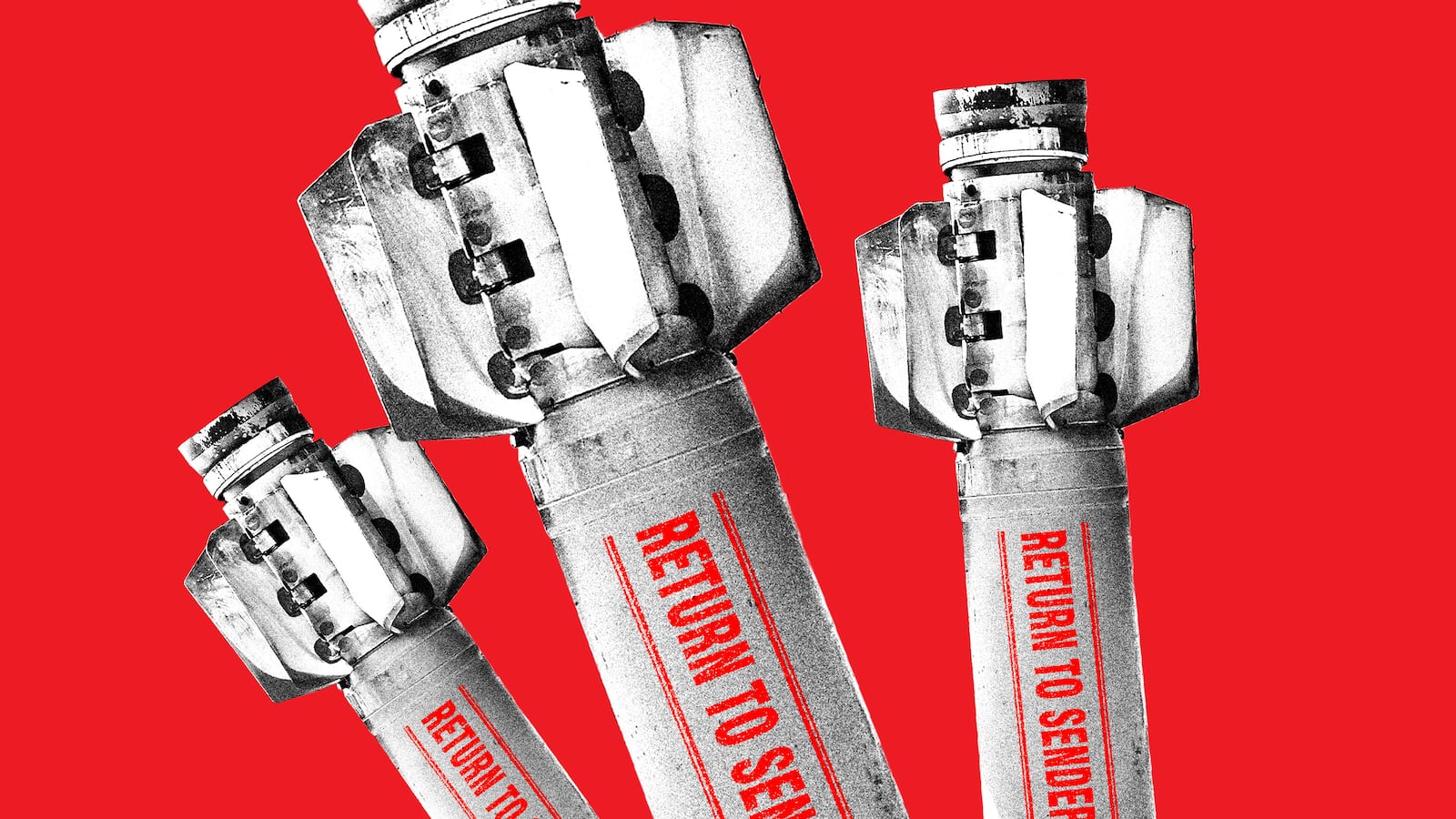The United States has decided to send cluster munitions to Ukraine. President Biden told CNN’s Fareed Zakaria that it was a “very difficult decision” and one that he discussed “with our allies” and “with our friends up on the Hill.”
I wonder if the allies he discussed it with included the U.K., France, Germany, or Canada. These close U.S. allies are all on the list of 123 nations—a large majority of the nations of the world—that have signed the UN convention forbidding the use of cluster munitions. Most of the planet considers the use of such weapons, which can spread explosive material over an area “up to the size of several football fields,” to be a war crime in itself, regardless of the intended target.
It's easy to conduct the debate about sending these weapons in glittering generalities—“Ukraine has a right to defend itself,” “we should give them whatever they need,” and so on. The grim reality is that Ukrainian children will be blowing themselves up with U.S.-made explosives for decades to come.
The Recent History of Cluster Bombs
The United States and Ukraine aren’t parties to the Convention on Cluster Munitions. Neither is Russia, whose own use of cluster munitions in Ukraine was widely—and correctly—condemned as a war crime when the Russian invasion started last year.
Some commentators are treating the fact that Russia used them as a “gotcha” response to anyone who doesn’t want the U.S. to send them to the Ukrainian side. But that makes no sense. Saddam Hussein used chemical weapons against Iraqi Kurds. Does that mean it would have been perfectly fine if the United States had used chemical weapons in its invasion of Iraq?
To be clear, we didn’t do that. But we did use cluster bombs—and this almost certainly contributed to the anti-U.S. insurgency which raged for years after the initial invasion, got tangled up in ethno-religious conflicts between different groups of Iraqis, and led to massive amounts of bloodshed and chaos.
Think about it. If your daughter had one of her legs blown off when explosive material was deposited across an area “up the size of several football fields” around a military target in Baghdad, how would you feel about the military that did it? If your brother or sister died when one of the bomblets went off in, say, 2007, wouldn’t you want to avenge yourself on the invaders?
The U.S. military says the last time it used cluster munitions in battle was 2006, and that it “began phasing them out because of the danger to civilians” in 2016. So why don’t civilians in Eastern Europe count?
Cluster Bombs vs. Peace Talks
When you read about “Russia” invading “Ukraine,” it’s easy to imagine that the only victims of cluster munitions supplied to Ukraine will be Russians. While I don’t think we should be cavalier about the deaths of Russian civilians—or for that matter Russian conscripts—it’s also important to remember that a great many of even the intended victims of these munitions will be Russian-allied separatists in eastern Ukraine. And when it comes to cluster munitions, which victims are intended is almost beside the point.
When I was in college, I went to a protest at a military base in Fort Benning, Georgia. The base is the home of the notorious “Western Hemisphere Institute for Security Cooperation,” previously called the “School for the Americas,” a notorious training school for Latin American military officers whose graduates have been involved in a number of human rights abuses over the decades.
One of the things I’ll always remember about that experience is that civilian homes lined both sides of the street, literally right up to the gates of the base. If Al Qaeda or some foreign government spread explosive material over an area “up to the size of several football fields” around at the base, do you really think it would only kill soldiers and people involved in the school?
Biden presents his decision to send cluster munitions to Ukraine as a grim necessity. “[T]he main thing,” he told Zakaria, “is they either have the weapons to stop the Russians now—keep them from stopping the Ukrainian offensive through these areas—or they don’t. And I think they needed them.”
This is hardly the first (or the fifth) example of the Biden administration trying to show restraint, saying that it will give this kind of military aid to Ukraine, but not that kind—and then crossing its own line a month or two later as the spiral of escalation continues. Each time, the rationales sound the same. This is what they need. It’s urgent. But it’s worth taking a long step back and thinking about the situation as a whole.
It’s not as if Russian tanks are at the gates of Kyiv. This is a counteroffensive to try to take back some territory lost earlier in the war, and one of the revelations in recently leaked Pentagon documents is that U.S. officials have long been skeptical that the counteroffensive will achieve much.
Realistically, the initial Russian objective of rolling into Kyiv and imposing a Russian-allied regime on the entire country has been off the table since spring 2022. And hardly anyone seems to believe that maximalist Ukrainian goals like retaking Crimea and every inch of the Donbas are likely to be achieved even if the war grinds on for another decade.
Whether it happens later this year or in 2024 or 2034, it’s hard to see how the war could end without either escalating into exactly the kind of wider conflict that Biden has tried to avoid, or ending in some kind of messy negotiated compromise.
At some point, basic questions have to be asked about what costs—in money that could be spent on domestic social programs, in human life on both sides of the war, in dangerously escalating superpower tensions, and now in weakening the global consensus against the use of cluster munitions—we’re willing to pay for the sake of making whatever final settlement sets the exact border between Russia and Ukraine in the Donbas slightly more favorable to the Ukrainian side.
Why is continuing this particular counteroffensive worth tearing apart the bodies of Ukrainian civilians with cluster munitions, not just in 2023, but for years or even decades after the fighting is over? Why not publicly invite Zelensky and Putin to Camp David for peace talks instead? Or why not endorse China’s ceasefire plan from several months ago?
We’re often told that “the Ukrainians” are the ones fighting and dying and that their judgment must be deferred to in all cases. Who are we to question “the Ukrainians” as they fight for their country?
But to talk this way is to treat a nation of 44 million people as a hive mind. The truth is that most ordinary people in any country have little say over foreign policy. Most civilians are just trying to live their lives. And they’re the ones whose children are going to be blown up by these munitions.









